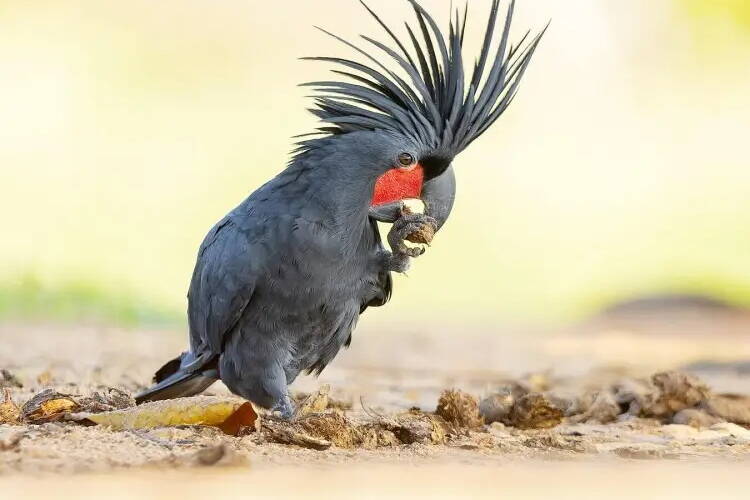In an orchestra, drums are a central feature of the percussion section, in which sounds are made by an object striking another one, creating aerial vibrations known as sound. In that example, a stick of some sort commonly strikes the drumhead membrane. A drum amplifies the sound with an air-filled chamber where the sound resonates. Sometimes the stick just hits the rim of the drum, without much reverberation.
Many animals put those basic principles to work in communicating with other individuals. We’ve all heard woodpeckers pounding out fast, repetitive knocks, very different from the tapping they make when foraging. Woodpeckers like to use resonating chambers to amplify the sound, so they often favor hollow trees or branches — or sometimes our metal drain spouts. Males communicate territory ownership to other males and advertise their presence to females; females may drum in the fall, to enforce territoriality. Both members of a pair drum as part of courtship and to encourage mating. All that head-banging might produce headaches, but woodpecker heads have several built-in shock-absorbers.
Down Under, in northern Australia, New Guinea, and Indonesia, there’s a parrot that makes a percussion tool for communication. The big, black, palm cockatoo selects and cuts off a twig, trims it, then holds it in his left foot and beats it on a branch, often a hollow one. Sometimes a hard seed pod is the tool of choice, and the owner modifies it to suit his taste. Each male has a favorite shape for that tool and a characteristic way of trimming the tool, which requires considerable strength. The process of trimming is the beginning of a mating display in which the male beats the tool in his own individual rhythm. The chosen tool is discarded after use, and a new one is formed for the next display. Sometimes the display is also accompanied by foot-stomping.
Male gorillas use their cupped hands to beat their chests. This behavior gives a signal about the body size and competitive ability of the males, because bigger males produce deeper sounds. Hollow spaces in the chest serve as resonating chambers. The drumming sound carries for quite long distances. Chest-beating is also a sign of victory in aggressive encounters between males. Females may use the signal in making mate choices.
Fish (such as toadfish called midshipmen) can drum too, and some even bear the name of “drum.” Using strong muscles, they typically produce rhythmic contractions of the gas-filled swim bladder, which acts as a resonating chamber, producing audible vibrations. The muscles contract and pull on the elastic wall of the bladder, which snaps back into position when the muscles relax, creating vibrations. The muscles may connect to a special bone connected to the bladder or a tendinous hook on the end of the sonic muscle may attach directly to the elastic wall.
A tiny fish of Myanmar in southeastern Asia puts all those other fishy drummers to shame. There are five species of Danionella, living in shallow, turbid waters. They are among the smallest fishes in the world, measuring just over a centimeter long. Research has shown than these tiny fish can generate sounds at least equivalent to that of a jackhammer, over 140 decibels. The sounds are produced in discrete pulses that occur in a repetitive sequence. Males have a specialized, hypertrophied fifth rib that is pulled anteriorly by a special, fatigue-resistant muscle that stretches a drumming cartilage. A sudden release lets the cartilage snap back and strike the bladder. Lots of fishes have swim bladders with two chambers, using just one chamber for sound production. Danionella has two chambers also, but it can use them unilaterally, alternating right and left. That unusual feature somehow permits the production of a greater diversity of sounds. All that noise is thought to be used in social communication.
Some critters produce repetitive drumming sounds without using a resonating chamber. Ruffed grouse males perch on a log with the tail braced; they spread their wings, rotate them forward, and then bring them quickly backward. The sudden compression and release of air pressure creates the sound, as air rushes into the temporary vacuum. It happens very quickly; there may be as many as 50 beats in about 10 seconds.
Little finches called “cordon bleu” rapidly tap-dance on a branch during courtship. These taps are considerably louder than the normal sound of the foot touching a branch and happen so fast — up to 50 times per second — that it is hard for us to see without high-speed filming. Females may use that signal to judge the quality of the male.
Rabbits thump the ground with their hind feet when they are irritated or feel threatened. Foot-thumping is common among desert rodents of various species. In North America, kangaroo rats (especially the large-bodied species) use the foot-stomping low-frequency sounds to show territory ownership and in territory and burrow defense. Individuals have distinctive drumming patterns, allowing them to discriminate neighbors from intruding strangers. One species can produce sequences of long drumrolls of 18 beats per second. Foot-stomping is also used when a rat is threatened by a snake; it’s an alarm signal that may also tell the snake it has been detected.
That’s just a sample of what goes on out there; you can be sure that more remains to be discovered.
• Mary F. Willson is a retired professor of ecology. “On The Trails” appears every Wednesday in the Juneau Empire.

